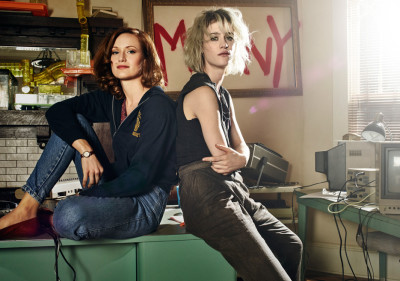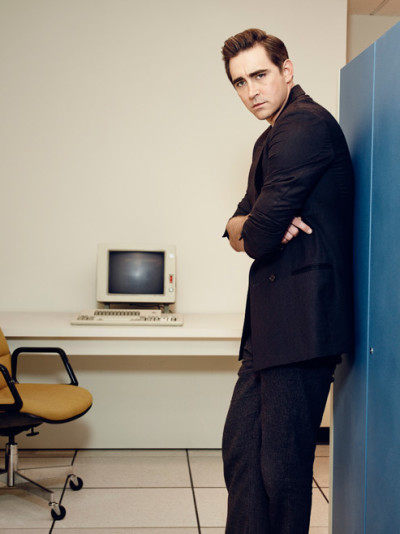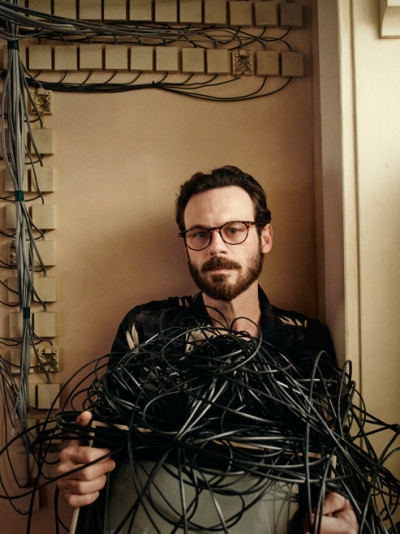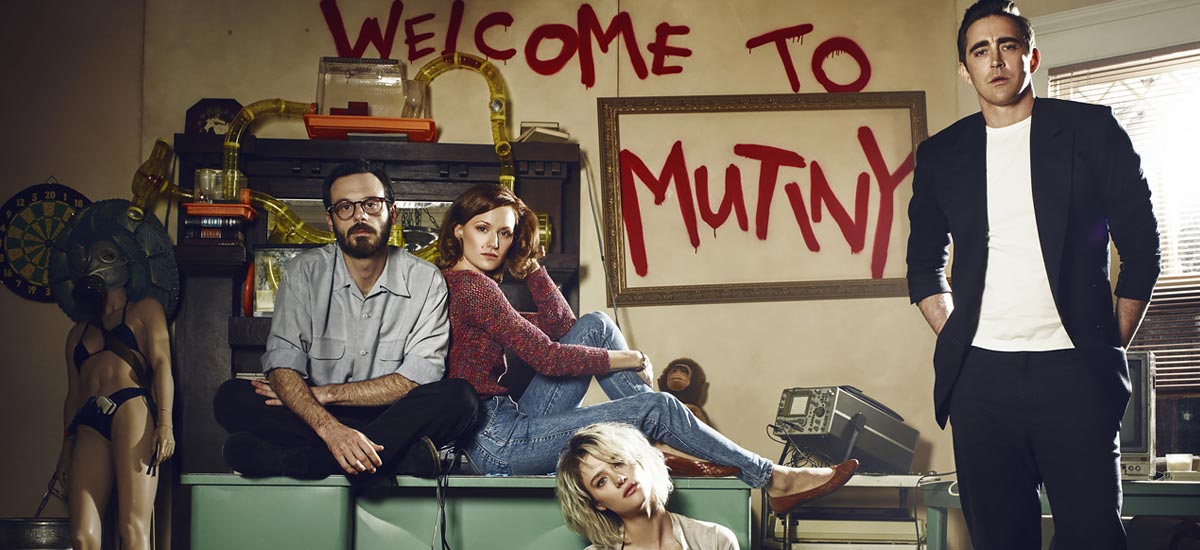All too often series that deal with the creation of something focus on the creation of the BEST something. Like with the series Mad Men where character Don Draper creates the BEST advertisements out there that make clients weep with joy or Breaking Bad where Walter White creates the BEST meth that keeps bringing the addicts back for more and more.

It makes sense for a series to focus on the best of something. It’s easier to create a show around a character like Olivia Pope in Scandal who runs the BEST crisis-management firm in DC rather than to run an okay firm who gets the job done but is a lot like many other companies out there.
It’s very rare — so rare that I can’t think of another show to do this — for a series to focus on the creation of something that turns out to be average, or mediocre, but that’s exactly what the creators of the excellent AMC series Halt and Catch Fire decided to to in their first season.
Halt and Catch Fire takes place in the early 1980s during the personal computer revolution set in “Silicon Prairie” Texas. Before everyone had a Mac or PC, or these days really more Android and iPhone, and no one knew what the standard personal computer would be there were many different companies all with different computers and operating systems that all entered the fray looking to define their standards as THE standard.
In Halt and Catch Fire former IBM executive Joe MacMillion (Lee Pace) is hired by Cardiff Electric as a salesman. But Joe’s a visionary with a hidden plan to use company resources to try and make one of the first post-IBM PCs, to capture the computer market and be a hero.

In his quest for greatness he finds underused and brilliant Carfiff hardware engineer Gordon Clark (Scoot McNairy) and Cameron Howe (Mackenzie Davis) a gifted software engineer and college dropout to make his dream happen.
Along the way the group works almost constantly, burns bridges, destroys lives and eventually creates an innovative computer called the “Giant.”
But what anyone who works in the computer/software industry is well aware of is that what’s fresh and new today can be smelly and outdated tomorrow. Which is what the Cardiff team finds when they go to sell their creation to big businesses but learn that what they thought was an innovative computer where a user can type questions and receive answers via a text interface looks positively amateurish compared to machines like the Macintosh with a graphical user interface that’s about to be launched alongside their Giant.
And that’s where Halt and Catch Fire veers from other similar shows. There’s a clear and distinct moment in the series where the characters who’ve spent the last year of their lives toiling over the creation of the Giant, have seen friends and family turn their backs when the creators didn’t have time for them, had created what they thought was truly great find out that they’ve really created something quite ordinary. Their computer isn’t innovative, it’s not even all that useful.

Instead what they’ve created is a historical footnote. They find that pushing limits often means splatting on the walls of innovation.
Unfortunately while I found the series to be spectacular not many shared this opinion and the ratings for the first season of Halt and Catch Fire were pretty dismal. The first season finale of the sereis did so poorly that I was convinced that it would also serve as the SERIES finale. Yet AMC in its ultimate wisdom decided to bring Halt and Catch Fire back for a second season which made me a very happy geek.
Which begs the question; how will Joe, Gordon and Cameron bounce back from spending a year of their lives creating something that at best is seen as being cheaper than the competition and at worst useless?
Is there life after the Giant?
The second season of Halt and Catch Fire is currently airing Sundays at 10(9c) on AMC.
